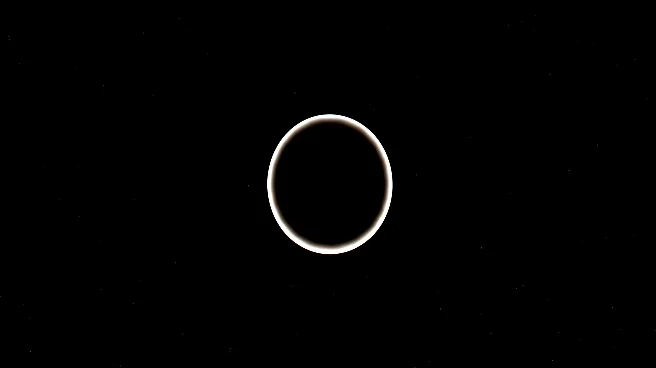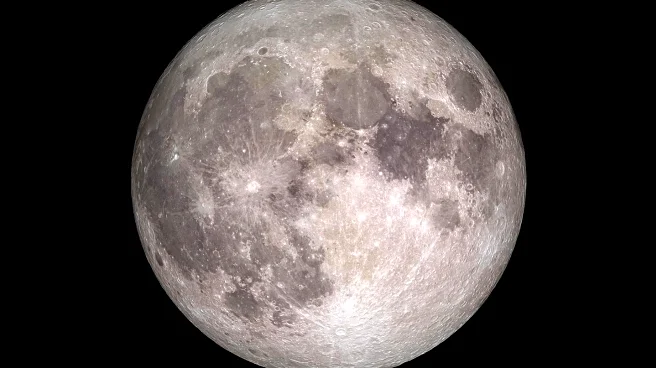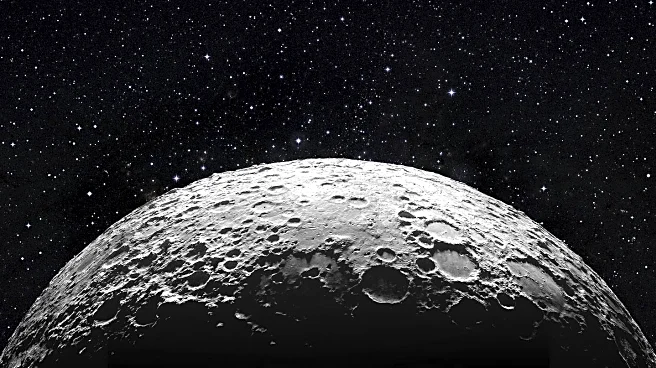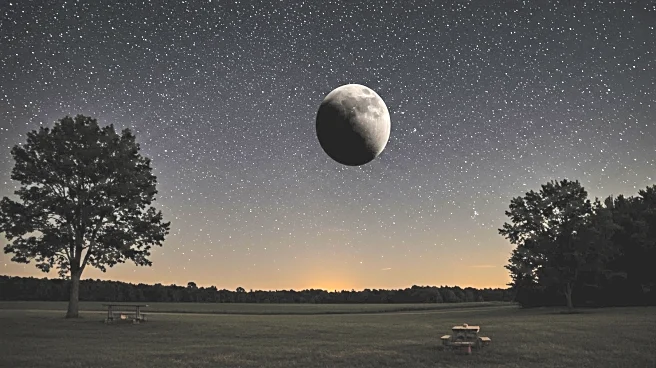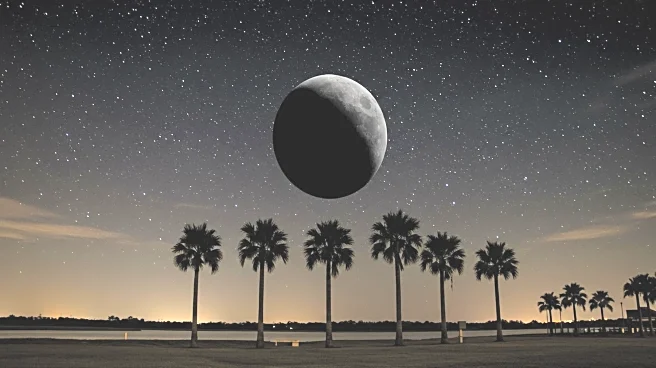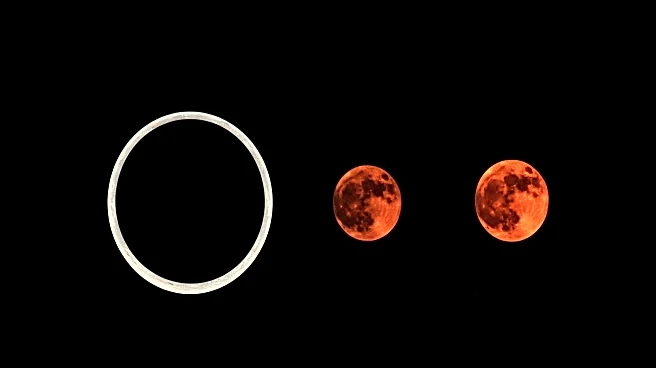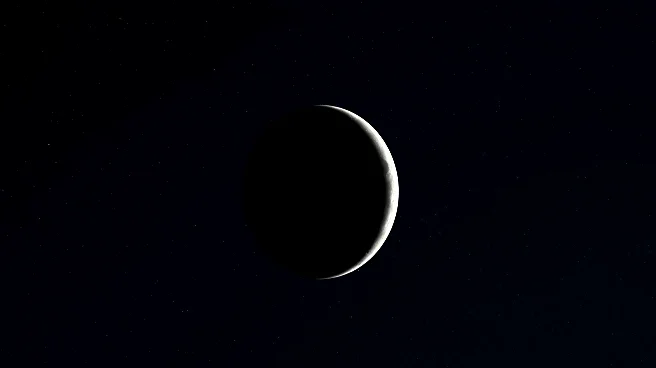What's Happening?
On August 24, 2025, the moon will be in its waxing crescent phase, with only 2% of its surface illuminated. This phase occurs after the new moon, as the moon begins to show a sliver of light on its right side. The waxing crescent phase is part of the lunar cycle, which spans approximately 29.5 days and includes eight distinct phases. During this cycle, the moon's appearance changes as it orbits Earth, altering the angles between the Sun, Moon, and Earth. The next full moon is expected on September 7, following the last full moon on August 9.
Why It's Important?
Understanding the lunar phases is crucial for various scientific and cultural activities. The waxing crescent phase offers limited visibility, making it less ideal for observing surface details on the moon. However, it provides an opportunity for stargazers to enjoy darker skies, which are better for viewing other celestial objects like stars and galaxies. The lunar cycle's predictability is essential for planning astronomical observations and cultural events tied to moon phases.
What's Next?
As the moon progresses through its phases, observers can anticipate increased visibility leading up to the full moon on September 7. This period will allow for more detailed observations of the moon's surface and enhanced stargazing opportunities. Astronomers and enthusiasts will continue to track the moon's phases to plan observations and events.



